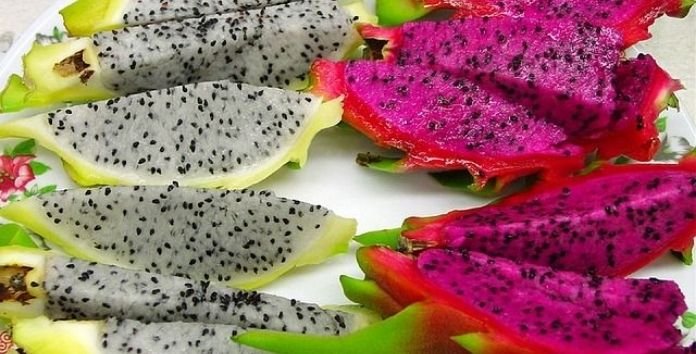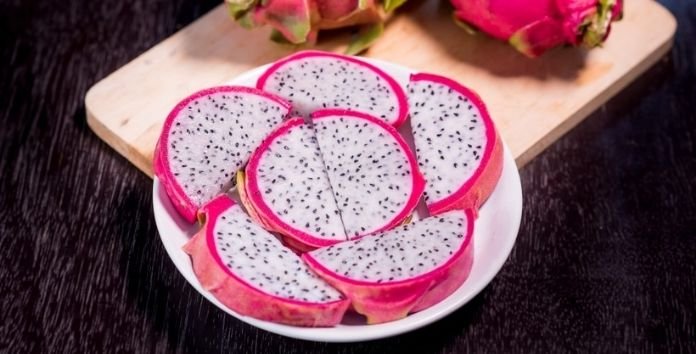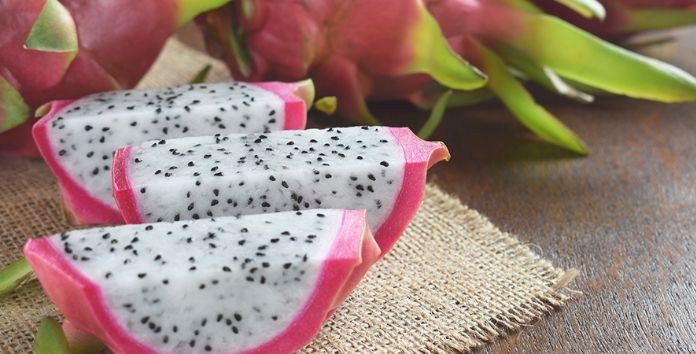If you notice, it is more and more common to find new fruits and vegetables when we go to the market to make the purchase. Different and exotic products quickly catch our attention due to their texture, colour or shape, since we have never seen or tried them before. This is the case of the dragon fruit, also called pitahaya, the fashionable food among lovers of healthy food, thanks to its large number of benefits and properties.
Where does dragon fruit originate from?
The origin of this new fruit is located in Central and South America, mainly in Mexico, despite the fact that today its cultivation has spread to more countries in the area and even to regions of China and Vietnam. Centuries ago the settlers of these countries fell in love with this fruit and exported it to other areas they were conquering.
Characteristics of the pitahaya
The pitahaya or dragon fruit, as we said, is an exotic fruit with intense colour, dark red, pink or yellow, with an interior that can be white or pink, depending on the variety of cactus from which it is collected. Its flavour is extremely sweet and with a touch reminiscent of kiwi or papaya, and even avocado.
We can distinguish two main types of dragon fruit :
- Yellow Pitahaya: Yellow in colour and with thorns. It has a higher sugar content, so its taste is sweeter. Due to its shape and colour, it is usually reminiscent of pineapples.
- Red pitahaya: Unlike the yellow variety, it does not have thorns but rather bracts. It is slightly larger in size and has a harder crust.

Another of the peculiarities of this dragon fruit is that its flowering period lasts one night, during which time it pollinates and the fruit grows.
The flowers emit a very pleasant smell that can be easily perceived wherever the plant grows but, however, as soon as it is cut, it suddenly loses.
Some properties of dragon fruit
Composed mainly of water, pitahaya contains important minerals such as iron, calcium and phosphorus, as well as countless vitamins (vitamins B1, B2, B3 and C) perfect for keeping our body healthy. In fact, it is especially indicated for people who suffer from high cholesterol and for those who are concerned about strengthening their immune system.
- Pitaya is a diuretic fruit that, in addition to preventing you from retaining liquids, will keep you hydrated.
- Being a source of vitamin C, it is considered a fruit with antioxidant properties, which means that it will delay the signs of ageing on your skin. It also combats the risk of suffering from chronic degenerative and cardiovascular diseases.
- If you want to lose weight, it will be one of your best allies because its caloric profile is minimal.
- The seeds that are present in 60% of the pulp of this exotic fruit improve the intestinal process and prevent constipation.
- Captin is the dominant component in the seeds of the dragon fruit or pitaya, and it reduces the risk of arrhythmia, in addition to improving the functioning of the heart.

How can we consume pitaya?
The best way to eat dragon fruit is to cut it in half and scoop out the pulp with a spoon. We do have to be careful if we don’t want to eat any of the numerous black seeds it contains and which are intermingled with its sweet and aromatic pulp.
It is refreshing and delicious in frozen juices and fruit salads, as well as in a smoothie with an exotic touch. Most cooks can be encouraged to prepare a delicious pitahaya jam. Without a doubt, the most original jam on any table.
In addition to raw, there are different ways to take the pitahaya cooked, without losing its properties. The most frequent is to find it as a garnish for certain dishes or as an ingredient that accompanies some salads.
Now that we know a little more about this dragon fruit, will you buy it if you see it in the market?
More on TheFlashUpdate:
Revealed: Why has Gujarat awarded dragon fruit with a Sanskrit name?
